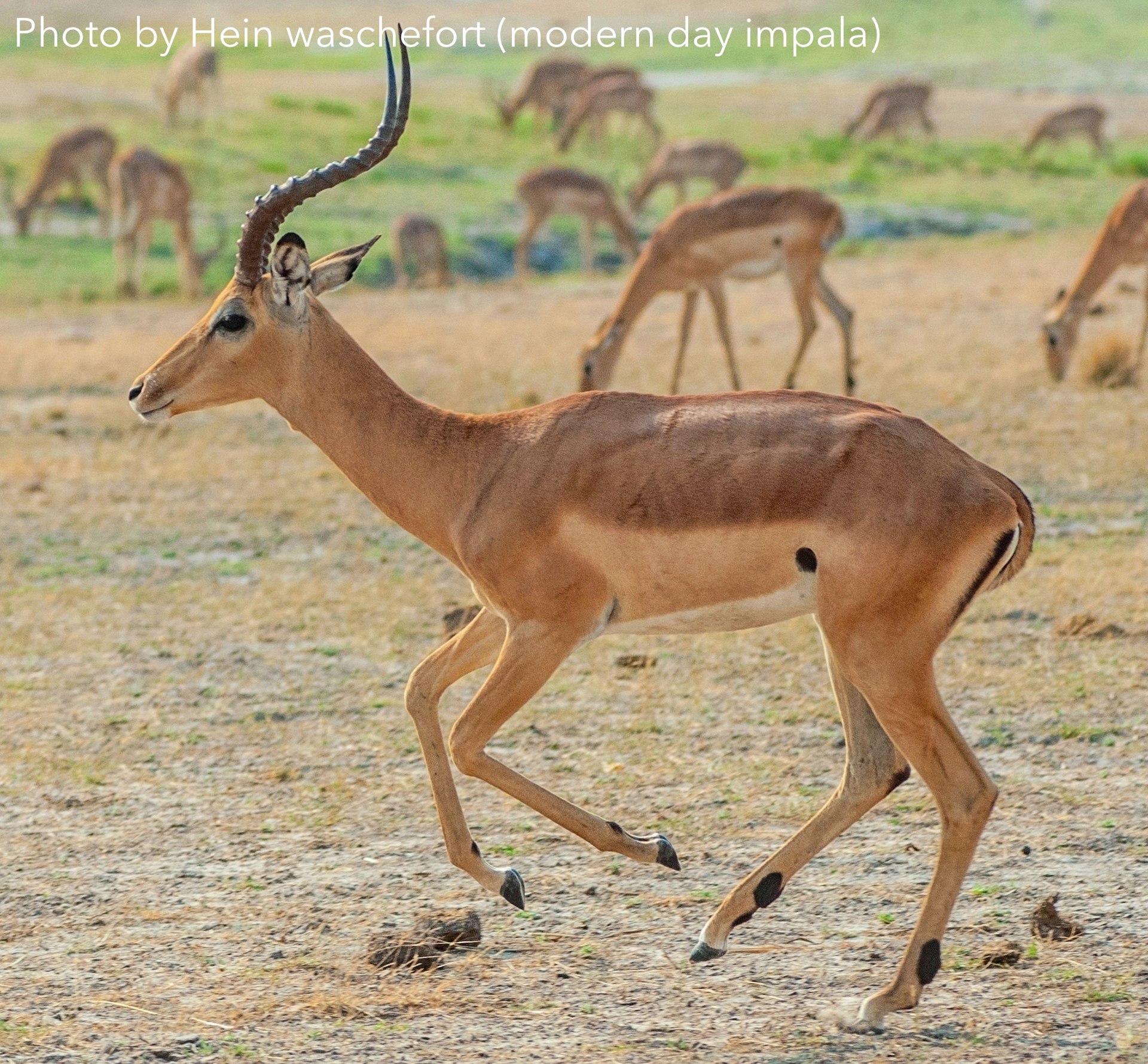Welcome to Aepyceros datoadeni

Name Definition
unavailable (Aepyceros itself means “high horned”)
Name Given By
Denis Geraads, René Bobe & Kaye Reed in 2012
Location
Hadar Formation of Ethiopia, eastern Africa
Classification
Mammalia, Artiodactyla, Pecora, Bovidae, Aepyceros
Size
unavailable, though it is thought to have been smaller than the modern day impala
Temporal Range
Late Pliocene epoch of the Neogene period, around 3 million years ago
Ecological niche
small browser/grazer
Species/Sub Species
unavailable
Diet
due to the similar dental morphology between the modern impala and Aepyceros datoadeni, it can be assumed that A. datoadeni also consumed the same kind of foods such as soft grasses as well as fruits, monocots, and dicot plants
Introduction
Aepyceros datoadeni is an extinct species of impala that lived in Ethiopia during the Pliocene epoch. Aepyceros datoadeni is thought to have closely resembled the modern day impala (Aepyceros melampus), but was significantly smaller. In the description that Geraads et al. released, a handful of other bovids (Bovidae is the cattle family which includes bison, buffalo, antelopes, wildebeest, cattle, etc.) have also been discovered from the Hadar Formation. Some of the 28 new bovid species from the Hadar Formation include a new species of kob, Kobus oricornus, the new gazelle species Gazella harmonae, as well as the descriptions of a new alcelaphine (the subfamily Alcelaphinae includes wildebeest and hartebeest as well as some other related animals) species Damalborea elisabethae, as well as a new bovine (Bovinae includes cattle, buffalos, and bison) genus Ugandax which contains two species, U. gautieri and U. coryndonae.
Sources:
- https://en.wikipedia.org/wiki/Aepyceros_datoadeni
- https://www.tandfonline.com/doi/abs/10.1080/02724634.2012.632046
- http://www.prehistoric-wildlife.com/species/a/aepyceros-datoadeni.html